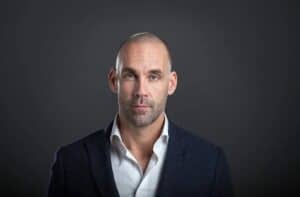Public speaking is also called oratory and is the age-old art practice of delivering a speech. The once-limited art has undergone some drastic changes in the last decades. These speeches have always been done live, but these have quickly and gradually shifted towards online as well.
Nowadays there is the rise of technology, which can enhance someone’s public speaking performance and improve someone’s overall presentation by delivering a message extra clearly with the help of the right visuals or the right sound.
The future of public speaking will be broken down in this blog post, with the most current trends and technologies for the presenters of now and the future.
Emerging technologies in presentations
Since we are living in a digital age, it has been no secret that technologies will be more helpful than ever. With the rise of Artificial intelligence, Virtual reality and AR we can only imagine a future where these amazing tools will be more advanced and enhance the human experience.
In presenting, we can also enhance our online or live performance for example, futurist and keynote speaker Richard van Hooijdonk, uses emerging technologies on a daily basis to capture the audience’s attention and communicate complex trends in an understandable way. His way of thinking and the technology he uses elevate public speaking to another level.
Technologies in combination with public speaking will have drastic changes and change the way we communicate and connect. It can enhance the impact of a message that is being told by the public speaker and creates an increase in engagement. This is exactly what you want since a crown can be very difficult to manage.
Virtual reality and augmented reality in speaking
Virtual reality has grown not only in research but also in usage, according to the latest insights. It has a lot of benefits for the public speaking industry since the combination of Virtual reality and augmented reality can create a new extended reality (XR) that gives insights into a new experience for people.
Forget the old PowerPoint presentations that will provide clarification in addition to the public speaker, it is time to show the audience the actual possibilities in real time. Let them be hypnotized by the words of the public speaker while they visualize and create their ideas.
Richard van Hooijdonk also incorporates Virtual Reality elements into his keynote speeches, which allows him to immerse his attendees and himself in futuristic scenarios. For instance, he once guided his audience through a virtual smart city to demonstrate how technological advancements will reshape urban living. This will enhance the connection between the speaker and the audience and will simplify the concept the public speaker is talking about. The presenter is normally limited by their imagination, now with the help of WR and AR, the public speaker can create a story about the beautiful Sahara Desert into reality, or better put visual art.
Even more complex topics that are hard to understand by just listening will be able to become easier to understand with the extra visuals and show an emotional connection to the information.
The rise of AI in public speaking
The rise of AI in public speaking not only helps the speaker in providing additional content and security in clarifying the message to the audience, but it also makes storytelling more effective. Effective storytelling is very important when you want to send a certain message, which is what it is all about with public speaking.
Richard van Hooijdonk has used AI-driven tools to analyse his audience and measure engagement during his presentations. This would provide real-time feedback in order to improve his delivery and public speaking skills. He also discusses AI’s role in generating data-driven insights that enrich the speaker’s message.
The overall rise of artificial intelligence and other emerging technologies has obliged the EU to move faster within the rule of law with human well-being in mind.
Social media and the modern speaker
Social media is a word we all know by now. It has been with us every day and some people are even obsessed with it. Hence why the modern public speaker also needs to include this in their vocabulary. We see a vibrant future when it comes to social media and the modern speaker. Not only on the user level but also on the informative level. Richard van Hooijdonk is a prime example of this trend. He leverages platforms like LinkedIn, YouTube, and Twitter to share thought leadership content, engage with his audience, and promote his upcoming presentations and talks.
Still, a lot of people don’t know how to properly use social media and reap the benefits from it. Public speakers can help fill this void and inform people of not only the use but also the possibilities of social media. It’s a future when physical and virtual parties join together and create something new and original.
Algorithms are complex things to understand, however, they already understand us and keep learning from our movements. Most social media platforms are already running on well-trained algorithms that will get smarter over time.
Share via:


